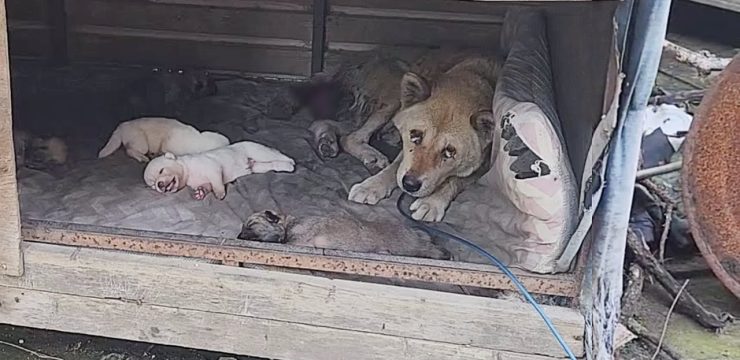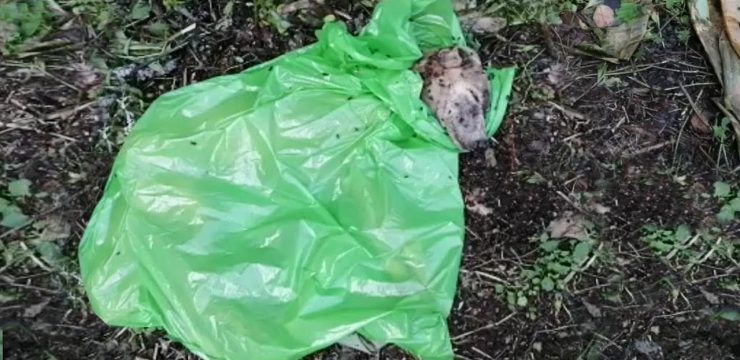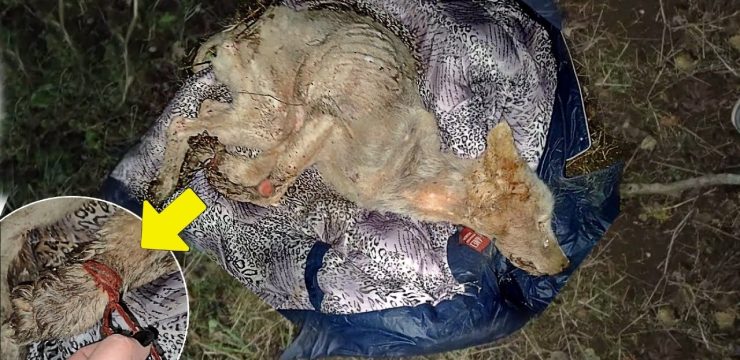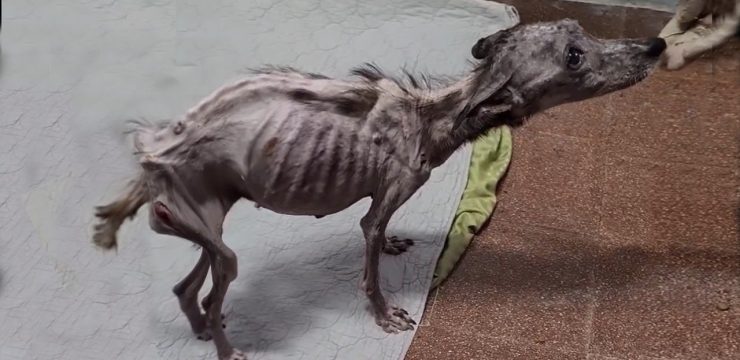For nearly two long, grueling weeks, the life of a young female black bear hung in the balance. At just 2 years old and weighing around 70 pounds, she faced an extraordinary challenge that threatened to end her life far too soon. Somewhere during her wanderings in the wild, she had gotten her head stuck inside a large, rigid plastic jar. It was wedged so tightly around her neck that she could not eat and could barely drink. Every day that passed without proper nourishment or water pushed her closer to the brink of exhaustion and death.
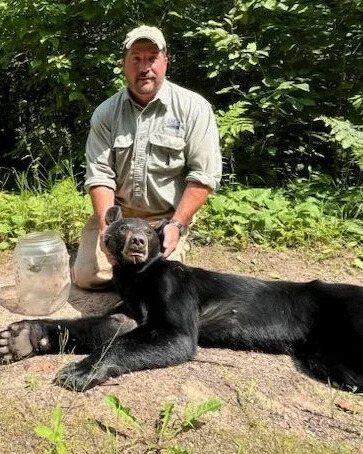
The first sightings of the bear came when people in the area began reporting an unusual and heartbreaking scene — a bear wandering through fields and forests with a container sealed over her head. The jar was not just a nuisance; it was a deadly trap. She could not forage properly, could not chew, and could only lap up a little water when she happened upon a stream or puddle shallow enough for her to reach. Still, she kept moving, as if driven by a desperate will to live.
In the days that followed, wildlife officials from the state’s department of natural resources took the reports seriously. They knew the bear’s condition would deteriorate quickly. Without the ability to eat and with minimal access to water, dehydration and starvation were imminent threats. The team set up live traps in the places she had been spotted, hoping to lure her in and safely remove the jar. But their task was far from easy.
The bear was constantly on the move, covering dozens of miles across rugged terrain. She seemed to sense danger and stayed ahead of those trying to catch her. Each day, officials received new public sightings — sometimes from hikers, other times from people living near the forest’s edge — but by the time rescuers reached those locations, she had already moved on. Her path was unpredictable, and her resilience surprising.
The jar had likely been stuck for the entire duration of her ordeal, meaning she had gone nearly two weeks without a proper meal. A young bear of her size needs to consume thousands of calories a day to sustain energy, especially during the summer when they prepare for the leaner months ahead. And yet, she pressed forward, traveling from one area to another, perhaps guided by instinct to find help, or perhaps simply refusing to give in.
Then came a turning point. On the twelfth day, a family staying at their cabin deep in the woods spotted movement among the trees. Out from the shadows emerged the bear, thin and weak but still moving steadily. The jar was still fixed over her head, a cruel reminder of how long she had suffered. The family realized immediately that they were witnessing the same animal from the news reports.
One of the family members, keeping a safe distance, quickly called wildlife authorities. As they waited for help to arrive, he decided to follow the bear, speaking to her in a calm, steady voice and waving his arms gently to keep her in sight. His goal wasn’t to scare her, but to make sure rescuers could locate her before she slipped away again into the dense forest.
Within a short time, a trained wildlife professional arrived, equipped with a safe immobilization dart. The moment was tense. If the bear bolted, they could lose her once more. But with careful timing, the dart was administered, and the bear slowed before settling to the ground, finally still after days of nonstop travel.
Rescuers hurried to her side. Using specialized cutting tools, they carefully worked the jar loose, ensuring they did not cause injury to her head or neck. When it finally came free, they were relieved to find no open wounds — just signs of significant weight loss and dehydration. Her fur was matted in places, and her ribs were faintly visible beneath her coat. Still, she was alive, and that was a victory worth celebrating.
“It’s incredible that she survived nearly two weeks without proper food and very little water,” one rescuer said later. “Being there at that moment, knowing it was finally over, is something we’ll never forget.”
The jar itself was a large, heavy-duty plastic container, possibly once used for snacks or bulk food, discarded somewhere in the wilderness or blown there by the wind. How the bear had gotten her head stuck inside it remained a mystery, but it served as a painful reminder of the dangers human litter poses to wildlife.
With the jar gone, the team wasted no time in helping her recover. She was transported to a quiet, forested area far from busy roads and human activity — a place where fresh water flowed nearby and natural food sources were abundant. When she awoke from the sedative, she appeared alert, quickly scanning her surroundings before lowering her head to graze on berries growing just a few feet away. The relief on her part was almost visible. She was free, and she wasted no time reclaiming the life she had nearly lost.
For the rescuers, the moment was deeply rewarding. They had spent nearly two weeks trying to help this animal, chasing leads and setting traps, never sure if they would get the chance to save her in time. Now, watching her move confidently into the trees, they knew their persistence had paid off.
The story of this bear’s ordeal is more than just an account of a rescue. It is a powerful example of resilience, of how even in the harshest circumstances, life can find a way to endure. It is also a reminder of the role humans play in both the challenges and solutions for wildlife. A single piece of litter became a near-death sentence for this young bear, but a coordinated effort by caring people gave her a second chance.
As she disappeared into the green expanse of the forest, the sound of leaves rustling in her wake, those who had fought to save her could only hope she would grow stronger, live longer, and never again encounter a trap of human making. Her journey had been one of suffering and survival, but in the end, it was also a story of freedom — and the unwavering will to live.
